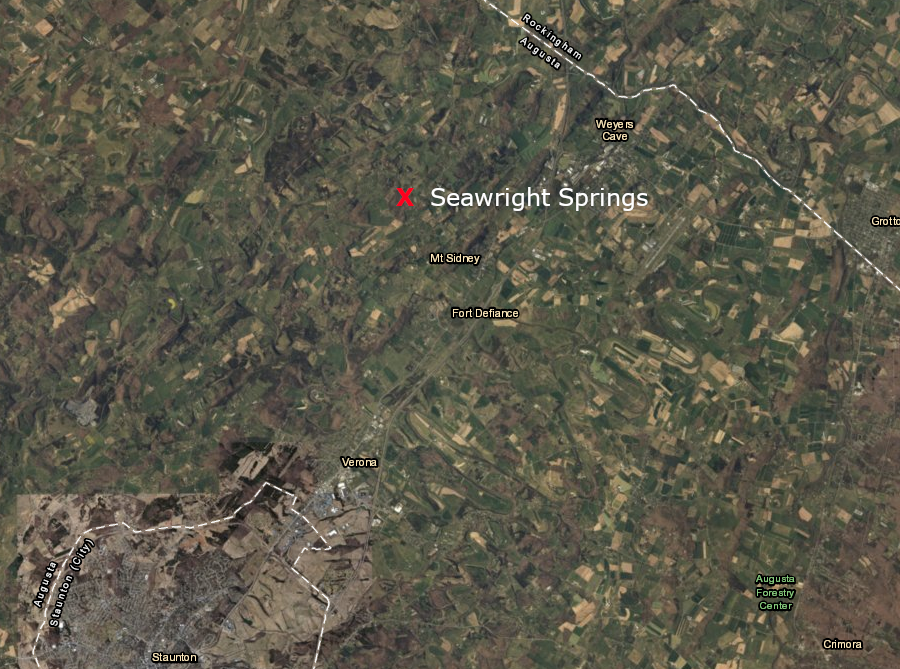
in 2019, Flow Alkaline Spring Water commercialized Seawright Springs in Augusta County as a source for bottled water
Source: ESRI, ArcGIS Online

in 2019, Flow Alkaline Spring Water commercialized Seawright Springs in Augusta County as a source for bottled water
Source: ESRI, ArcGIS Online
Springs are found where groundwater reaches the surface. Many are just tiny seeps, ephemeral spots that appear after rains when the water table if high and disappear when the zone of saturated ground drops in elevation. A few are large enough to become landmarks.
Bath County received its name after colonists developed the thermal springs located in the area. In the 1800's, before the introduction of air conditioning, wealthy Virginians spent a portion of the hot summer months touring resorts developed around springs in the mountains. Resorts without hot springs, such as Sweet Chalybeate Springs in Alleghany County, claimed health benefits associated with the high levels of iron and other minerals in their springs.
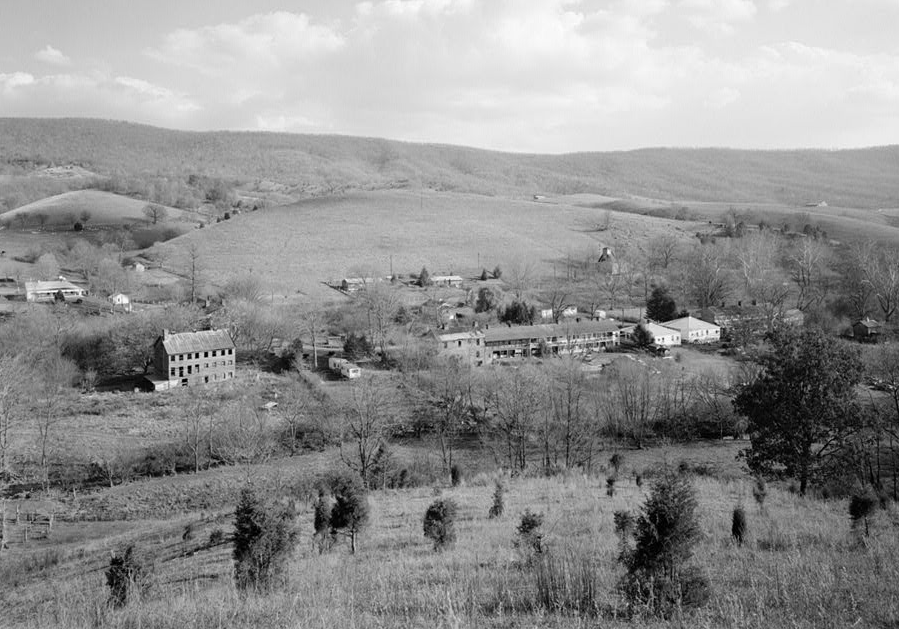
Sweet Chalybeate Springs operated as a resort from 1836-1918
Source: Library of Congress, Sweet Chalybeate Springs, State Route 311, Sweet Chalybeate, Alleghany County, VA
Some springs have been developed as drinking water sources. Groundwater that has moved slowly through bedrock and sediments typically will be clear, since suspended sediment particles will have settled out. Spring water will also be attractively cool in the summer, matching the average temperature of the area below the frost line (approximately 56°).
Early settlers build spring houses with pools in which milk, butter, and cheese could be kept cool in the summertime. In urbanized areas many once-essential springs have been covered up and incorporated into stormwater systems, but others have been retained as historic sites.
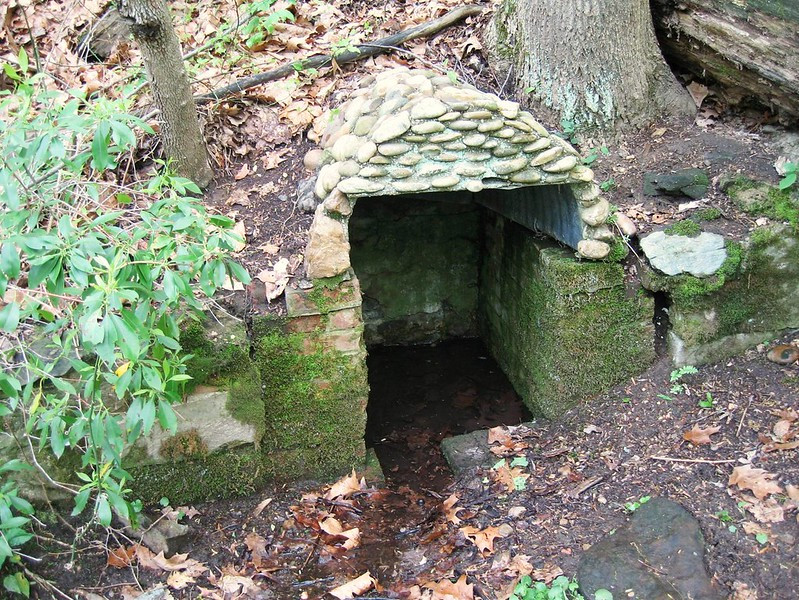
Carlin Spring in Arlington County has been transformed, but still flows on the surface of the ground
Source: Arlington County, Slide 11 Historic Carlin Spring
Some springs have been improved with pipes channeling the water to the edge of a road or trail. The appearance of clear, filtered water does not make it safe to drink, however. Pollution comes from upstream in the watershed of a spring. Some pollution sources are natural. Wildlife do not use designated toilet area away from a spring's recharge area, and soils may include arsenic or radon-producing radioactive elements.
The most common source of pollution today is Giardia, a microscopic parasite that causes diarrhea. It has been carried into every watershed by infected humans or animals, and deposited in their feces.1
Spring water is still bottled and sold, though it must be treated first to meet Food and Drug Administration (FDA) standards. Bottled water may be sourced from municipal systems and drilled wells, not just from springs. The Food and Drug Administration classifies spring-based bottled water as:2
In Hanover County, Virginia Artesian Bottling Company has drilled a 400-foot deep well into what it describes as a "protected aquifer." The well is at the headwaters of Totopotomoy Creek, but the water bottled by Virginia Artesian comes from the Potomac Formation sediments that were deposited during the Cretaceous Period 100 million years ago. The water being pumped up from the well migrated over perhaps several centuries from a location several miles to the west, at a spot where the Potomac Formation was exposed to rainfall. Modern rainfall that flows into Totopotomoy Creek is totally separate from the older groundwater at the bottling site.
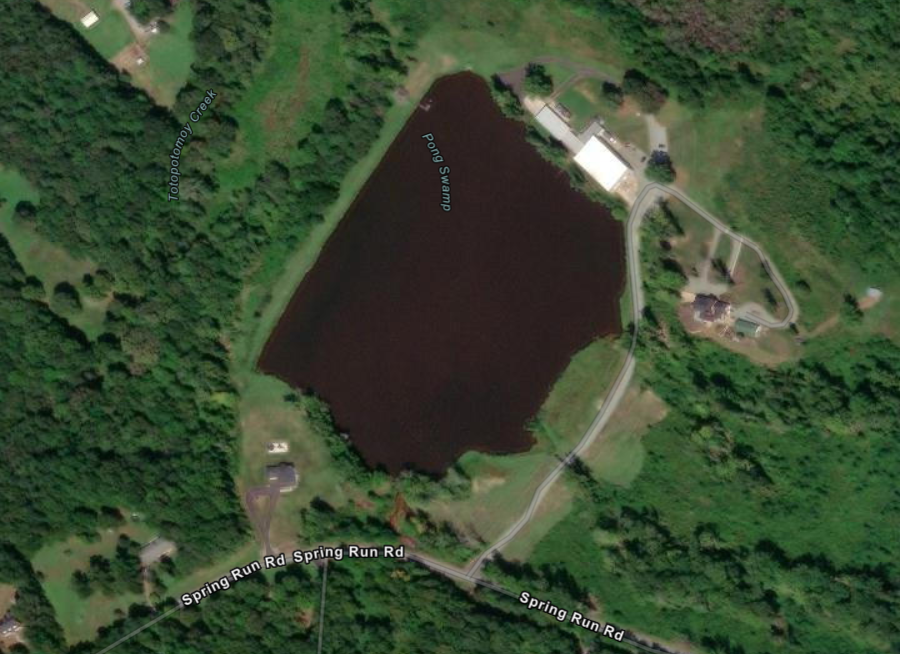
the water bottled by Virginia Artesian comes from a well 400 feet underground, not from recent rainfall
Source: ESRI, ArcGIS Online
The well water is bottled and sold under the company's name, and under the name of universities and other organizations as well. Virginia Artesian is a custom bottler, applying different labels to the same water for 80% of its production. The family-owned company proudly says the business was built "from the bottom up." The company cites a report from a professional engineering firm's geologist, who determined that the water comes from an artesian source.
Bottling water has been a successful business. In 2023, Virginia Artesian Bottling Company announced a $3 million expansion project in Hanover County.
Marketing a product as readily available as water requires creativity. Unless water moves under natural pressure up to the surface, labelling botled water as "artesian" rather than "artisanal" reflects an advertising more than a scientific approach. The water used by Molson-Coors at its brewery in the Shenandoah Valley is also extracted from an underground aquifer. It is pumped up through drilled wells; there is nothing "artesian" about that beer.3
Source: Salacious Drinks, Episode #1 - Virginia Artesian Bottling Company
Artesian water does not always reach the surface. Water moving underground and under pressure between two sandstone formations shaped the development of Breathing Cave in Bath County.4
A 3,300 foot well in Bland County started to produce artesian water in 1921. A previous business that bottled the water was named "3,300 Artesian Bottled Water Company," reflecting the depth of the well producing water at a steady 54°F. Wilderness Mountain Water Company purchased the company in 2022 and announced plans to expand production. The company logo includes a mammoth, perhaps because skeletons of that Ice Age mammal have been excavated in the nearby Saltville Valley.5
the logo for the Wilderness Mountain Water Company includes a mammoth
Source: Wilderness Mountain Water Company
Its first water source was a natural spring in Ontario, Canada. The company needed another water source to expand into East Coast sales.
Nearby residents objected to the truck traffic, and to possible impacts on water supplies for livestock and houses. Augusta County officials responded that a 1996 zoning decision authorized nine tanker trucks a day to be hauled from the spring, but residents would get to comment before a Special Use Permit allowing more trucks would be approved.6
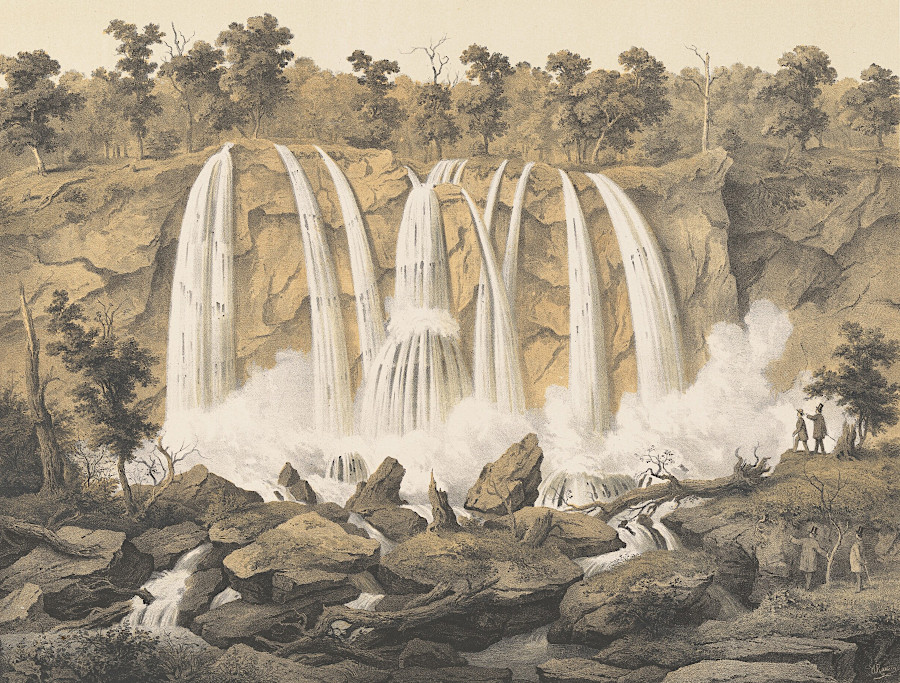
mining of travertine after 1914 reduced the height of Falling Springs from 200' to 70'
Source: National Gallery of Art, Falling Springs (1857)